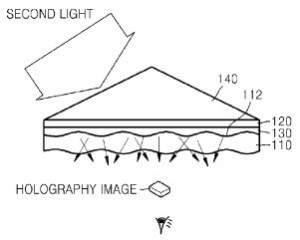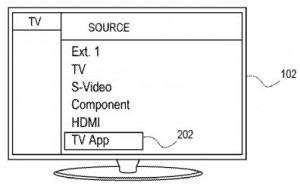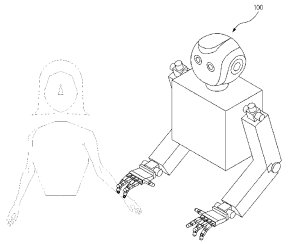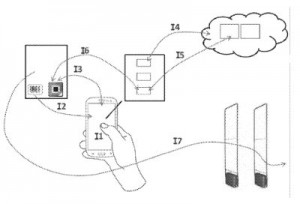 Samsung Electronics Co. (KRX:005930) of Suwon, South Korea has recently been noted for gaining a lead position in an industrial sector where it’s becoming more and more common to see high tech developers getting involved: automobiles. According to Forbes, Samsung has bested rival tech companies like Google Inc. (NASDAQ:GOOG), Microsoft Corporation (NASDAQ:MSFT) and Apple Inc. (NASDAQ:AAPL) in terms of the number of patent applications filed to protect technologies within that field, filing a total of 510 patent applications over the past 10 years. That’s a miniscule amount when compared to actual vehicle manufacturers, to be sure, but it does highlight Samsung’s to take charge in growing areas of high tech research and development. Most of Samsung’s automotive patent applications protect lithium ion battery technologies, many of which are being used in electric vehicles developed by BMW (ETR:BMW).
Samsung Electronics Co. (KRX:005930) of Suwon, South Korea has recently been noted for gaining a lead position in an industrial sector where it’s becoming more and more common to see high tech developers getting involved: automobiles. According to Forbes, Samsung has bested rival tech companies like Google Inc. (NASDAQ:GOOG), Microsoft Corporation (NASDAQ:MSFT) and Apple Inc. (NASDAQ:AAPL) in terms of the number of patent applications filed to protect technologies within that field, filing a total of 510 patent applications over the past 10 years. That’s a miniscule amount when compared to actual vehicle manufacturers, to be sure, but it does highlight Samsung’s to take charge in growing areas of high tech research and development. Most of Samsung’s automotive patent applications protect lithium ion battery technologies, many of which are being used in electric vehicles developed by BMW (ETR:BMW).
In the middle of August, Samsung unveiled a new Samsung Pay mobile payment system that can transmit credit or debit card payment information at any terminal, giving it an edge over Apple Pay and Android Pay digital wallet systems that require new terminal equipment. Samsung acquired the digital wallet technology earlier this year when it purchased Massachusetts-based LoopPay for $250 million. We had covered some growing activities in the digital wallet sphere this March, noting that a mobile payment showdown was looming between Apple and Google. It’s not unreasonable to suggest that the new Samsung Pay system, which takes advantage of a totally different technology than the rival systems, is proof that the patent system encourages innovation. When patents block an actor like Samsung from simply copying a different system, it forces that company to find a new, innovative way into a market. The consumer benefits most when Samsung is forced to produce a product that is not only different but better.
 Samsung is a huge force in the U.S. patent system, earning a total of 4,936 patents from the U.S. Patent and Trademark Office in 2014 alone. This amount, good for second overall behind perennial patent champion IBM (NYSE:IBM), represents an increase of 6 percent over Samsung’s 2013 results. In the three months leading up to the time of this writing, Samsung has earned a total of 1,725 U.S. patents according to the IP portfolio analysis tools available from Innography. As the text cluster here shows us, Samsung’s recent patents have mainly focused on semiconductor devices, memory devices and electronic devices.
Samsung is a huge force in the U.S. patent system, earning a total of 4,936 patents from the U.S. Patent and Trademark Office in 2014 alone. This amount, good for second overall behind perennial patent champion IBM (NYSE:IBM), represents an increase of 6 percent over Samsung’s 2013 results. In the three months leading up to the time of this writing, Samsung has earned a total of 1,725 U.S. patents according to the IP portfolio analysis tools available from Innography. As the text cluster here shows us, Samsung’s recent patents have mainly focused on semiconductor devices, memory devices and electronic devices.
[Companies-1]
Issued Patents of Note: From Internet TV Apps to Robots for Measuring Vital Signs
 We noted a couple of recently issued patents which protect systems for three-dimensional multimedia content, starting with U.S. Patent No. 9122244, which is titled Holography Devices, Three-Dimensional Image Display Apparatuses Including the Same, and Methods of Processing Holography Images. The holography device protected here includes a light reaction layer that reacts with light to form and remove a diffraction grating, a metal thin film on the light reaction layer, a buffer layer that prevents deformation of the light reaction layer from affecting the thin film and a prism array on the thin film which adjusts a light’s inclination angle to output a holography image. This innovation seeks to improve upon conventional holography devices which utilize a single-use photopolymer that cannot be recharged. Systems for producing stereophonic sound is at the center of U.S. Patent No. 9113280, titled Method and Apparatus for Reproducing Three-Dimensional Sound. It claims a method of producing stereophonic sound by acquiring depth information representing the depth value of pixels constituting an image object in an image signal, acquiring sound depth information indicating a distance between a sound object and a reference location, using representative depth values for each image section of the image signal and providing sound perspective to the sound object based on the sound depth information. This system is intended to improve stereophonic sound effects corresponding to the activity of image objects in a video or image.
We noted a couple of recently issued patents which protect systems for three-dimensional multimedia content, starting with U.S. Patent No. 9122244, which is titled Holography Devices, Three-Dimensional Image Display Apparatuses Including the Same, and Methods of Processing Holography Images. The holography device protected here includes a light reaction layer that reacts with light to form and remove a diffraction grating, a metal thin film on the light reaction layer, a buffer layer that prevents deformation of the light reaction layer from affecting the thin film and a prism array on the thin film which adjusts a light’s inclination angle to output a holography image. This innovation seeks to improve upon conventional holography devices which utilize a single-use photopolymer that cannot be recharged. Systems for producing stereophonic sound is at the center of U.S. Patent No. 9113280, titled Method and Apparatus for Reproducing Three-Dimensional Sound. It claims a method of producing stereophonic sound by acquiring depth information representing the depth value of pixels constituting an image object in an image signal, acquiring sound depth information indicating a distance between a sound object and a reference location, using representative depth values for each image section of the image signal and providing sound perspective to the sound object based on the sound depth information. This system is intended to improve stereophonic sound effects corresponding to the activity of image objects in a video or image.
 Samsung’s smart television technologies, which utilize an IP address to provide additional content to complement typical broadcast television, will get a boost from the innovation described within U.S. Patent No. 9124931, entitled Managing a TV Application for Over-The-Top TV. It discloses a method of displaying content on a television by dynamically determining whether an input source for a TV is set to a virtual input source, validating viewer account credentials, executing a TV application that enables over-the-top (OTT) TV video content delivery using an Internet connection, dynamically displaying content from a last-selected channel or service, enabling normal TV operations including changing channels and automatically the TV application enabling OTT TV video content delivery for the last-selected service when the TV is turned on. This invention enables an Internet television owner to quickly return to the OTT service application, like Netflix or Hulu, which an owner was last watching without having to wait for the app to load.
Samsung’s smart television technologies, which utilize an IP address to provide additional content to complement typical broadcast television, will get a boost from the innovation described within U.S. Patent No. 9124931, entitled Managing a TV Application for Over-The-Top TV. It discloses a method of displaying content on a television by dynamically determining whether an input source for a TV is set to a virtual input source, validating viewer account credentials, executing a TV application that enables over-the-top (OTT) TV video content delivery using an Internet connection, dynamically displaying content from a last-selected channel or service, enabling normal TV operations including changing channels and automatically the TV application enabling OTT TV video content delivery for the last-selected service when the TV is turned on. This invention enables an Internet television owner to quickly return to the OTT service application, like Netflix or Hulu, which an owner was last watching without having to wait for the app to load.
The lower price of digital camera equipment today compared to years past has increased the number of amateur photographers in the world and those hobbyists can improve their pictures thanks to the tech protected by U.S. Patent No. 9106829, titled Apparatus and Method for Providing Guide Information About Photographing Subject in Photographing Device. The method for photographing a subject disclosed here involves determining a capture pose, transmitting information of the capture pose to a portable terminal of a subject as an outline or image representation, identifying the pose of a subject corresponding to the capture pose information, capturing the subject automatically based if the subject’s pose is similar to a capture pose and transmitting capture pose change information if the degree of similarity between the subject’s pose and a capture pose are less than a certain threshold. This photographer’s guide innovation seeks to deliver professional photography techniques to amateur photographers who may be unaware of certain imaging concepts.
Hydrogen fuel cell technologies are a topic that we’ll explore from time to time on IPWatchdog and we were intrigued to see Samsung increasing its holdings in this area through the issue of U.S. Patent No. 9115434, titled Water Splitting Oxygen Evolving Catalyst, Method of Preparing the Catalyst, Electrode Having the Catalyst, and Water Splitting Oxygen Evolving Device Having the Electrode. The water splitting oxygen evolving device claimed here includes a working electrode, a counter electrode and a buffered aqueous electrolyte solution that includes a proton-accepting anion. This water splitting technology is intended to encourage higher c atalytic activity to produce more hydrogen for hydrogen-based energy systems.
atalytic activity to produce more hydrogen for hydrogen-based energy systems.
We also took some time to explore a Samsung invention in the field of medical robotics, reflected within U.S. Patent No. 9101324, entitled Vital Sign Measurement Robot and Control Method Thereof. This patent protects a vital sign measurement robot which has an input unit to receive vital sign measurement instruction, an image recognition unit that detects the three-dimensional shape of a person’s body and the distance between the robot and the person, a control unit that controls a hand of the robot to move an electrode to a measurement site on the person’s body and a vital sign measurement unit that measures vital signs via the electrode. This system for remote medical treatment in a healthcare system provides monitoring of a patient’s vital signs without requiring the inconvenience of manually attaching electrodes to a patient’s body.
Patent Applications of Note: From Anti-Theft Devices for Wearables to Cyclone Dust Collectors
 Digital wallet technologies developed by Samsung are at the center of U.S. Patent Application No. 20150242842, entitled Method for Secure Mobile Payment and RF Tag with Integrated Anti-Theft Device. This would protect a method for secure mobile payments by starting a software application on the user’s mobile device, reading a product’s barcode through a device’s camera to display product information, purchasing the product through a network-based retail service of the establishment, reading an ID of a product containing a radio frequency (RF) tag with an anti-theft device, seeking a random and unique tag-key corresponding to the ID in the secure network-based retail service, disabling the anti-theft device in the RF tag upon receiving the tag-key and alerting the user to the disablement of the anti-theft device. This technology allows a customer to complete the checkout of a product at a retail store, including disabling of any anti-theft devices on the product, without requiring a sales clerk. Anti-theft devices and techniques are also featured within U.S. Patent Application No. 20150243157, titled Cradle for Exhibiting Wearable Device and Method for Warning Stolen State of Cradled Wearable Device. This patent application claims a cradle which includes a cradle head supporting a wearable device while being detachable from the cradle body as well as an anti-theft device that connects the cradle body and the wearable device. This innovation provides a cradle body which can be exchanged with a variety of electronic devices and provide anti-theft measures for a device.
Digital wallet technologies developed by Samsung are at the center of U.S. Patent Application No. 20150242842, entitled Method for Secure Mobile Payment and RF Tag with Integrated Anti-Theft Device. This would protect a method for secure mobile payments by starting a software application on the user’s mobile device, reading a product’s barcode through a device’s camera to display product information, purchasing the product through a network-based retail service of the establishment, reading an ID of a product containing a radio frequency (RF) tag with an anti-theft device, seeking a random and unique tag-key corresponding to the ID in the secure network-based retail service, disabling the anti-theft device in the RF tag upon receiving the tag-key and alerting the user to the disablement of the anti-theft device. This technology allows a customer to complete the checkout of a product at a retail store, including disabling of any anti-theft devices on the product, without requiring a sales clerk. Anti-theft devices and techniques are also featured within U.S. Patent Application No. 20150243157, titled Cradle for Exhibiting Wearable Device and Method for Warning Stolen State of Cradled Wearable Device. This patent application claims a cradle which includes a cradle head supporting a wearable device while being detachable from the cradle body as well as an anti-theft device that connects the cradle body and the wearable device. This innovation provides a cradle body which can be exchanged with a variety of electronic devices and provide anti-theft measures for a device.
 We often see an intersection between robotics development and biologically assistive technologies and more traffic in this area has resulted in the filing of U.S. Patent Application No. 20150231018, entitled Walk-Assistive Apparatus and Method of Controlling the Walk-Assistive Apparatus. It discloses a walk-assistive apparatus which has a walking assistance device with a link connected to a joint and rotating in response to joint rotation, a spring connected to the link and the joint and a processor that controls the length of the spring so that the spring compensates for gravitational weight when the wearer walks. This invention is designed to attach to the lower body of a person who has a disability that impedes normal walking activity so as to provide that person with walking assistance.
We often see an intersection between robotics development and biologically assistive technologies and more traffic in this area has resulted in the filing of U.S. Patent Application No. 20150231018, entitled Walk-Assistive Apparatus and Method of Controlling the Walk-Assistive Apparatus. It discloses a walk-assistive apparatus which has a walking assistance device with a link connected to a joint and rotating in response to joint rotation, a spring connected to the link and the joint and a processor that controls the length of the spring so that the spring compensates for gravitational weight when the wearer walks. This invention is designed to attach to the lower body of a person who has a disability that impedes normal walking activity so as to provide that person with walking assistance.
Techniques for more effectively migrating content between a mobile device and the cloud are detailed within U.S. Patent Application No. 20150244838, titled Method and Apparatus for Transferring Digital Content Between Mobile Devices Using a Computing Cloud. This patent application would protect an electronic device comprised of a communication unit communicating with at least one server in a wireless network, a display, an input unit that receives user input and a processor that receives information of digital content stored on a server, controls the display to present received information, receives a user input for selecting a content based on the received information, controls the communication unit to transmit a request for the selected content to the server and receives the content from the server. To judge by the background section of the patent application’s description, this cloud computing innovation is designed to improve music streaming services so that there is no downtime when a user selected queue of music is exhausted by the service.
 We happened to stumble across a fairly interesting innovation in the field of personal fitness that would be protected by U.S. Patent Application No. 20150238815, titled Method and Apparatus for Recommending Exercise Routes. The apparatus for recommending an exercise route claimed here includes a reference point receiver receiving at least two points displayable on a map, an exercise route generator that generates a geographical route between the two points and a plurality of exercise routes by associating at least one type of exercise with a geographical route, and a map generator that generates a map upon which exercise routes are presented together with the amount of calories that would be expended on the respective routes. This invention is designed to provide more robust software applications for personal fitness which can incorporate a wider range of exercise.
We happened to stumble across a fairly interesting innovation in the field of personal fitness that would be protected by U.S. Patent Application No. 20150238815, titled Method and Apparatus for Recommending Exercise Routes. The apparatus for recommending an exercise route claimed here includes a reference point receiver receiving at least two points displayable on a map, an exercise route generator that generates a geographical route between the two points and a plurality of exercise routes by associating at least one type of exercise with a geographical route, and a map generator that generates a map upon which exercise routes are presented together with the amount of calories that would be expended on the respective routes. This invention is designed to provide more robust software applications for personal fitness which can incorporate a wider range of exercise.
We often see Samsung patents and patent applications for home appliances like dishwashers or laundry machines but we were intrigued to note the appliance innovation featured within U.S. Patent Application No. 20150223657, entitled Cyclone Dust Collecting Apparatus and Cleaner Having the Same. The cyclone dust collecting apparatus disclosed here includes a dust collecting case with a suction port and a discharge port for introduction and discharge of air, a cyclone unit that generates rotating air flow by a main cyclone chamber that rotates air through the suction port to separate dust from the air through centrifugation as well as a grille unit that guides a flow of air through the main cyclone chamber and includes an introduction pipe guiding the air into the main cyclone chamber and a grille body detachably coupled to the introduction pipe that allows air to be discharged once dust particles of a certain size are filtered from the air. This cyclone dust collector has an improved structure of internal flow passages as well as an improved structure for enabling opening and closing of the dust collector.
Finally, we’ll wrap up today’s survey of Samsung innovations with a look at one patent application detailing a novel technology for the electronic reproduction of music. U.S. Patent Application No. 20150228202, titled Method of Playing Music Based on Chords and Electronic Device Implementing the Same. This claims a method of playing music in an electronic device with a touch screen by identifying background music related to the music to load sound source data synchronized with the background music, reproducing the background music, identifying chords corresponding to the reproduced background music in the sound source data, configuring notes corresponding to the chords as notes displayed on the touch screen and reconfiguring those notes when chords in the background music are changed. This invention provides a mobile device application which allows a user to produce music from the electronic device in a way that is responsive to the music being played, simplifying play and automatically adjusting to changing chords.

![[IPWatchdog Logo]](https://ipwatchdog.com/wp-content/themes/IPWatchdog%20-%202023/assets/images/temp/logo-small@2x.png)


![[Advertisement]](https://ipwatchdog.com/wp-content/uploads/2024/04/Patent-Litigation-Masters-2024-sidebar-early-bird-ends-Apr-21-last-chance-700x500-1.jpg)

![[Advertisement]](https://ipwatchdog.com/wp-content/uploads/2021/12/WEBINAR-336-x-280-px.png)
![[Advertisement]](https://ipwatchdog.com/wp-content/uploads/2021/12/2021-Patent-Practice-on-Demand-recorded-Feb-2021-336-x-280.jpg)
![[Advertisement]](https://ipwatchdog.com/wp-content/uploads/2021/12/Ad-4-The-Invent-Patent-System™.png)







Join the Discussion
No comments yet.